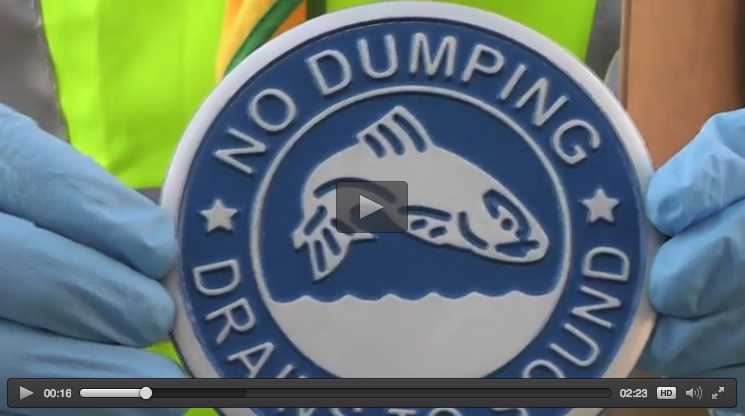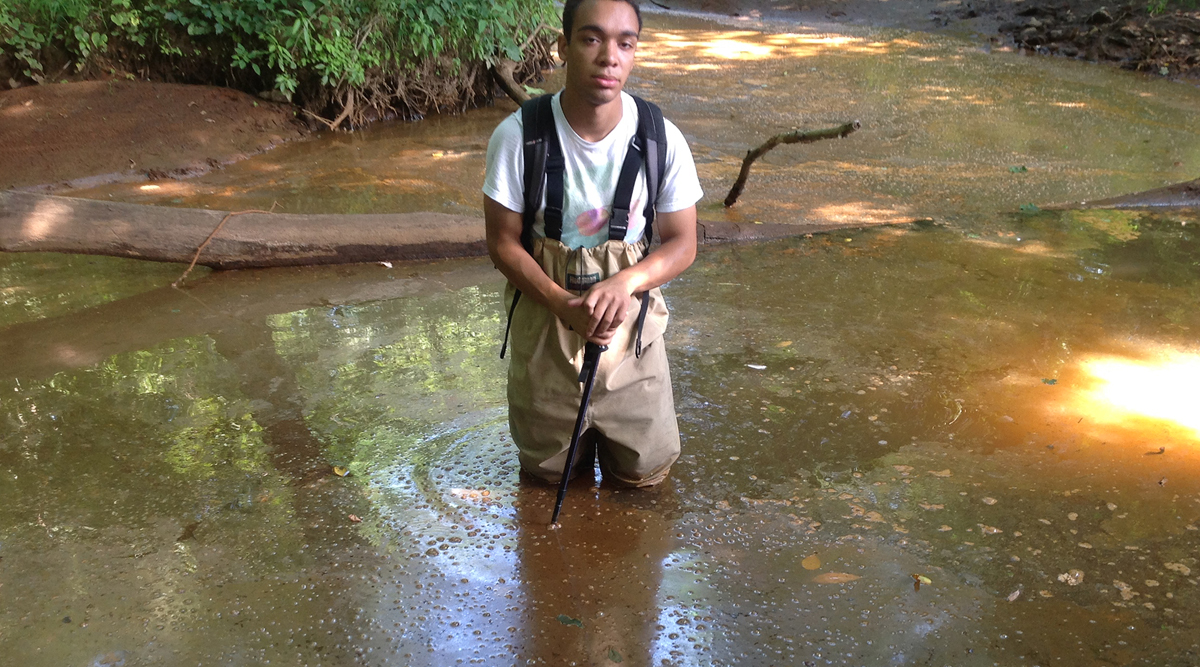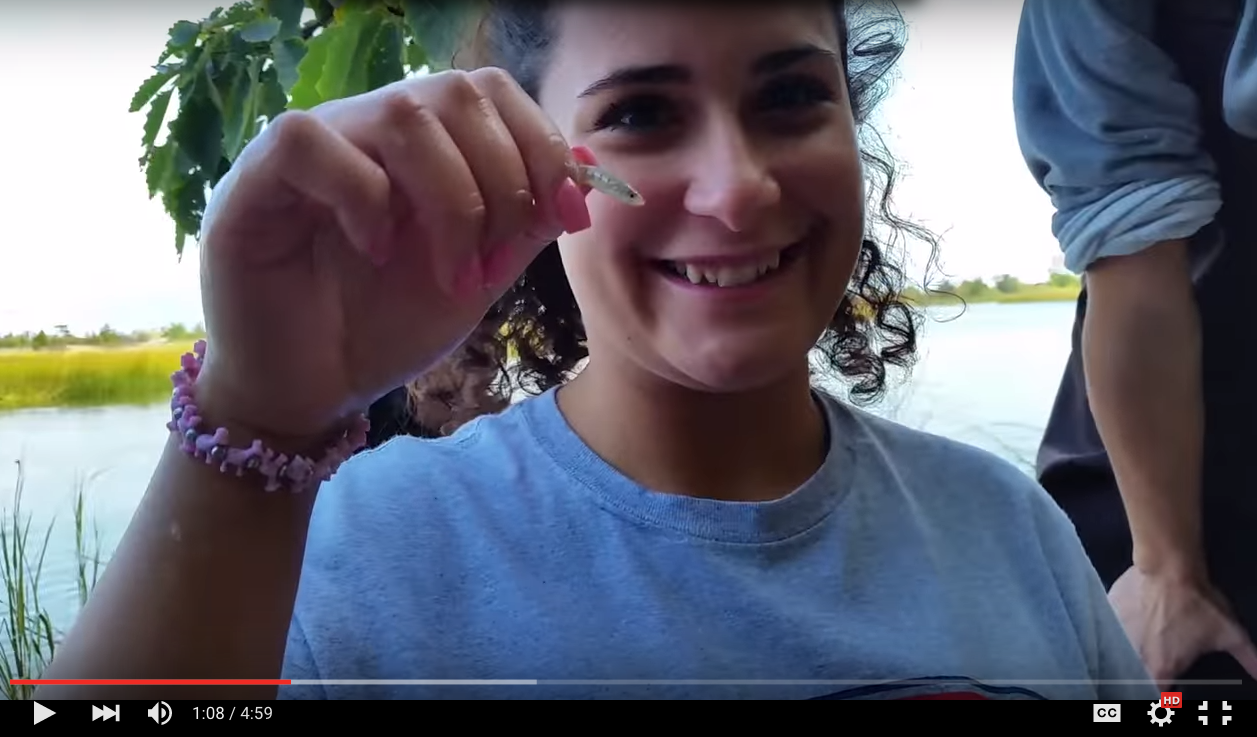We’re grateful for the next generation of Long Island Sound stewards.
Encouraging young people to care about Long Island Sound is an important part of our mission. Luckily our region is blessed with lots of students who are smart, love science, and are dedicated to environmental advocacy. We get excited anytime STEM (the academic disciplines of science, technology, engineering, and mathematics) aligns with environmentalism to benefit ecological health.
In this week’s blog post—the 6th of our series “A Time to be Grateful” —we will be highlighting:
- Pelham Memorial High School in NY
- A Greenwich Boy Scout
- Common Ground High School in New Haven, CT
- Sachem High School students on Long Island
A Steady Rain
Pelham Memorial High School is a majestic building sitting alongside the Hutchinson River Parkway, its beauty in direct contradiction to the high pollution levels of the Hutchinson River. Recently, our NY water quality program manager, Peter Linderoth, was invited to give a presentation to Mr. Lieber’s AP environmental science class of approximately 20 students. The day was overcast and drizzling. Despite the weather, students outfitted themselves in rain gear and boots, then headed out for an expedition to measure fecal indicator bacteria, chemical parameters, and macroinvertebrates in the river.

Peter took students to two of our regular water quality monitoring sites (R-HUT-4.40 and R-HUT-4.42) on the Hutchinson River near the intersection of Farrell Ave and Beechwood Ave in Mount Vernon. The sites are surprisingly accessible to Pelham, thanks to a pedestrian bridge that crosses the highway. With fall foliage bursting in color, students eased their way down a slippery hillside dotted with wet, yellow maple leaves to the river’s edge.
One student bravely donned waders for the trek to the river shore to conduct two water samples, which were then analyzed by our lab in Mamaroneck.
Both sites are within a hundred feet of each other, the R-HUT-4.40 site has a stormwater outfall that consistently tests very high for fecal pollution. Both sites failed all 8 times we sampled them this summer. The stormwater outfall site failed the day of the student-sampling event with bacteria levels three orders of magnitude higher than the upstream site sampled. The students were shocked when led through the safety protocol for sampling sites such as these two and to learn about the high levels of fecal contamination in the river running adjacent to their school. Additionally, the students conducted a biological survey of macroinvertebrates via a leaf litter analysis.
Peter was impressed by the students’ high level of intellectual curiosity. Many of the students demonstrated their eagerness to better understand the issue, by asking good questions and engaging in interesting conversations. We are heartened to know they want to be a part of the solution. Save the Sound is grateful for science teachers throughout NY and CT, like Mr. Lieber, who are exposing students to hands-on, real world experiences in their science classes.
“No Dumping”
A boy scout in Greenwich is trying to educate his peers and neighbors about hypoxia, the low-dissolved oxygen condition that threatens aquatic life in Long Island Sound. “The Sound is Greenwich’s backyard. Everyone spends their summers there, sailing, swimming and it is really fun,” said Bennett Hawley in the Greenwich Sentinel. “But a lot of people don’t know that we’re polluting the Sound and I wanted to stop this.” For his project he:
- created a survey link where you can test your knowledge;
- affixed 100 “no dumping” medallions to catch basins in areas of Greenwich Ave and by Greenwich High School; and
- created a pamphlet that can be found at all Greenwich public libraries.
Read more about Bennett’s project in the Greenwich Free Press.

Three Feet of Muck
Tucked into a quaint corner of West Rock State Park (Connecticut’s largest state park) is a high school called Common Ground. As the nation’s longest-running environmental charter school, they work to create the next generation of environmental leaders. Save the Sound has been honored to partner with Common Ground through our West River restoration efforts, including the new West River watershed management plan. This summer we worked with students to monitor Wintergreen Brook through stream walks.

Common Ground High School students focused on general watershed education and stream walk surveys. Stream walks (or assessments) are used to evaluate the overall condition of a stream, help identify problem areas, and provide a basis for detailed field investigation and potential restoration opportunities. Students received an introductory course in stream ecology, water quality, non-point source pollution (runoff), and the relationship between a community and its river. The training session increases students’ awareness and understanding of potential threats to the health of a river. An important goal was to promote stewardship of the watershed through education and outreach, plus improved access to the West River.


Up to Their Elbows in an Estuary
High school students on Long Island are getting on the fun, too. Students from Mrs. Marlowe’s environmental science classes at Sachem North High School in Ronkonkoma have been studying biodiversity, nutrient levels, and other key signs of stream health on the Nissequogue River estuary.

The Nissequogue flows through Sunken Meadow State Park, the site of our biggest coastal resiliency project yet, so we’re extra excited that these dedicated volunteers are tracking its health! Returning from year to year, the students have already found that species biodiversity has increased since tidal flow was restored to the marsh after Superstorm Sandy. Our projects should help make the water quality of Sunken Meadow’s creeks and rivers better, and improve wildlife habitat with marsh plantings and other habitat restoration. We’ll look forward to seeing Sachem North’s data in coming year to see how the project makes a difference. These young scientists are doing important real-world research already!
